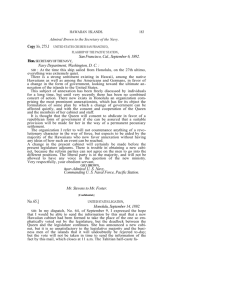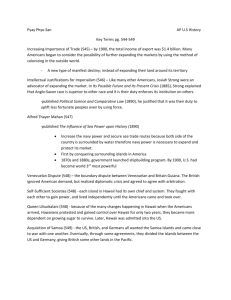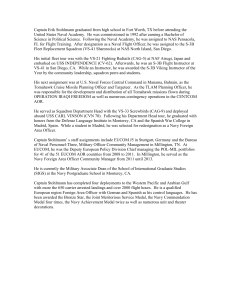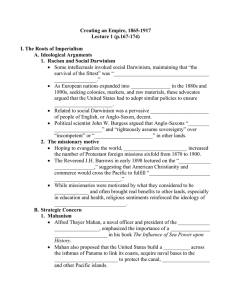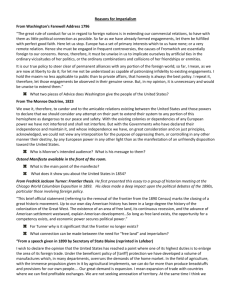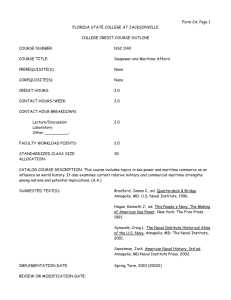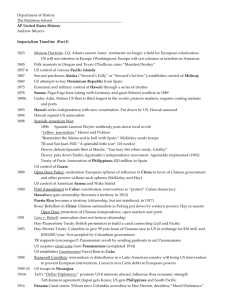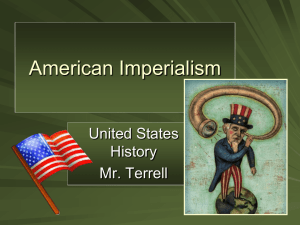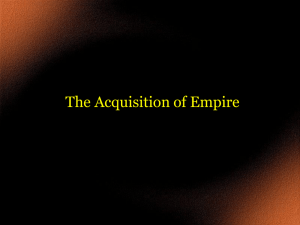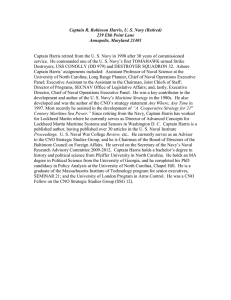Imperialism Lecture Notes
advertisement
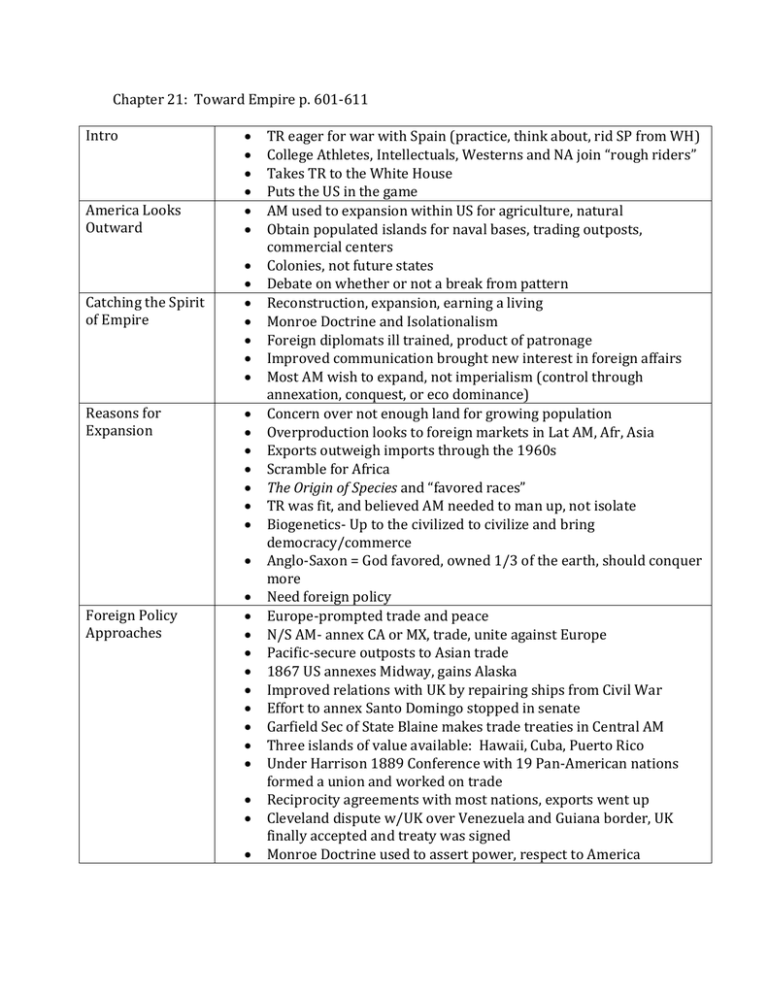
Chapter 21: Toward Empire p. 601-611 Intro America Looks Outward Catching the Spirit of Empire Reasons for Expansion Foreign Policy Approaches TR eager for war with Spain (practice, think about, rid SP from WH) College Athletes, Intellectuals, Westerns and NA join “rough riders” Takes TR to the White House Puts the US in the game AM used to expansion within US for agriculture, natural Obtain populated islands for naval bases, trading outposts, commercial centers Colonies, not future states Debate on whether or not a break from pattern Reconstruction, expansion, earning a living Monroe Doctrine and Isolationalism Foreign diplomats ill trained, product of patronage Improved communication brought new interest in foreign affairs Most AM wish to expand, not imperialism (control through annexation, conquest, or eco dominance) Concern over not enough land for growing population Overproduction looks to foreign markets in Lat AM, Afr, Asia Exports outweigh imports through the 1960s Scramble for Africa The Origin of Species and “favored races” TR was fit, and believed AM needed to man up, not isolate Biogenetics- Up to the civilized to civilize and bring democracy/commerce Anglo-Saxon = God favored, owned 1/3 of the earth, should conquer more Need foreign policy Europe-prompted trade and peace N/S AM- annex CA or MX, trade, unite against Europe Pacific-secure outposts to Asian trade 1867 US annexes Midway, gains Alaska Improved relations with UK by repairing ships from Civil War Effort to annex Santo Domingo stopped in senate Garfield Sec of State Blaine makes trade treaties in Central AM Three islands of value available: Hawaii, Cuba, Puerto Rico Under Harrison 1889 Conference with 19 Pan-American nations formed a union and worked on trade Reciprocity agreements with most nations, exports went up Cleveland dispute w/UK over Venezuela and Guiana border, UK finally accepted and treaty was signed Monroe Doctrine used to assert power, respect to America The Lure of Hawaii and Samoa The New Navy Crossroads of the Pacific 1820 Am missionaries arrive, attract more settlers who come to dominate Reciprocity treaty of 1875 allows duty free sugar into US, and stated Hawaii not bound to make any economic or territorial concessions to other nations They became dependent upon US for trade and protection 1887, US given Pearl Harbor as naval base McKinley Tariff ended, reciprocity ended, Hawaiian sugar production dropped, unemployment Leader dies, new nationalist leader Queen Liliuokalani creates constitution giving more power to natives Whites rebel, US military sweeps in and annexes on 2/14/1893 Harrison replaced by Cleveland who withdrew treaty and investigated, restored the queen The people refused and created a republic Debate for annexation went on, US had responsibility to Christianize and Civilize, take before Japan does; Some worried of “mongrel population” and a colonial army July 1898 annexation joint resolution went through both houses Set up naval station in Samoa Islands UK, Germany and US all want it; 1899 US and Germany divide and give UK land elsewhere Pressure to rebuild once powerful (Civil War era) Naval strategist Manan wrote books stating: Industrialism created demand for foreign markets, ports required merchant marine and navy to protect, navy needed coaling stations (colonies) which could also be used or trade Race “militarism” Creation of new ships, subs, rapid fire, torpedoes, etc. 1889-1891 Sec of Navy Tracy took navy from 12 to 7, 1899 was 3rd

